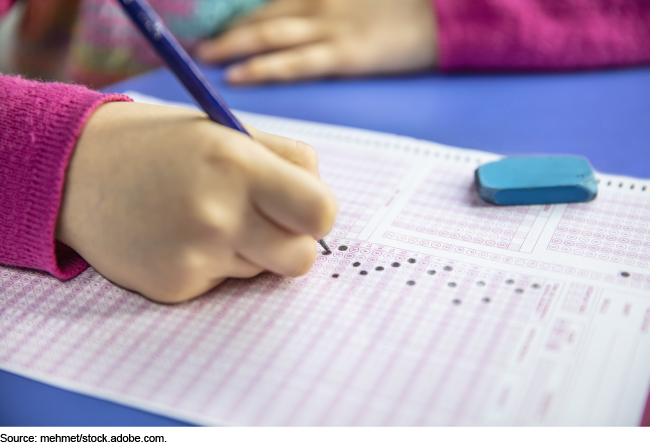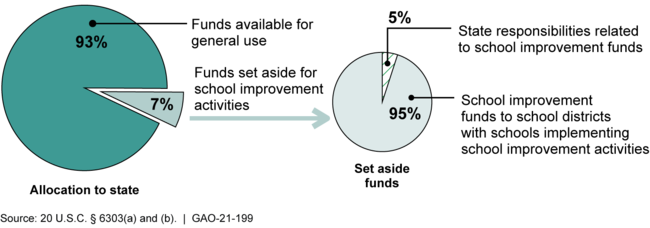K-12 Education: Observations on States' School Improvement Efforts
Fast Facts
The Elementary and Secondary Education Act holds states accountable for ensuring that public school children receive a quality education. Many states use flexibilities within the act to identify and serve low-performing schools and student subgroups needing support and improvement.
We looked at how states allocate funds for schools identified for support and improvement. We found that 27 states use a formula to allocate funds. And in at least 34 states, all school districts that applied for federal funds received them for the 2018-2019 school year. We also found that some states funded specific schools within districts.

Highlights
What GAO Found
Many states use flexibilities in the Elementary and Secondary Education Act (ESEA), as amended, in identifying low-performing schools and student subgroups (e.g., students from major racial and ethnic groups and low-income students) that need support and improvement. For example, states must identify all public high schools failing to graduate at least one-third of their students. According to GAO's state plan analysis, four states used ESEA's flexibilities to set higher graduation rates (i.e., 70-86 percent) for purposes of state accountability. Similarly, while ESEA requires states to identify schools in which students in certain subgroups are consistently underperforming, 12 states assess the performance of additional student subgroups. Although states are generally required to set aside a portion of their federal education funding for school improvement activities (see figure), states have some discretion in how they allocate these funds to school districts. According to GAO's survey, 27 states use a formula to allocate funds. GAO also found that in at least 34 states, all school districts that applied for federal funds received them in school year 2018-2019, but states had discretion regarding which schools within those districts to fund and at what level.
Funding for School Improvement through the Elementary and Secondary Education Act (ESEA) Title I, Part A

Note: For more details, see figure 2 in GAO-21-199.
A majority of the 50 states and the District of Columbia responding to our survey reported having at least moderate capacity to support school districts' school improvement activities. Education provides various types of technical assistance to build local and state capacity such as webinars, in-person training, guidance, and peer networks. About one-half of states responding to GAO's survey sought at least one type of technical assistance from Education's program office and various initiatives, and almost all of those found it helpful. For example, Education's Regional Educational Laboratories (REL) help states use data and evidence, access high-quality research to inform decisions, identify opportunities to conduct original research, and track progress over time using high-quality data and methods. Several states most commonly reported finding the following assistance by RELs to be helpful: in-person training (26), webinars (28), and reviews of existing research studies to help select interventions (24).
Why GAO Did This Study
The Elementary and Secondary Education Act (ESEA) requires states to have statewide accountability systems to help provide all children significant opportunity to receive a fair, equitable, and high-quality education, and to close educational achievement gaps high-quality education. These systems must meet certain federal requirements, but states have some discretion in how they design them. For example, ESEA requires states to identify low-performing schools and student subgroups for support and improvement.
Senate Report 115-289 accompanying the Departments of Labor, Health and Human Services, and Education, and Related Agencies Appropriations Bill, 2019, includes a provision for GAO to review states' school improvement activities.
This report addresses (1) how states identify and allocate funds for schools identified for support and improvement; and (2) the extent to which states have capacity to support districts' school improvement activities and how helpful states find Education's technical assistance.
GAO analyzed the most current approved state accountability plans from all 50 states and the District of Columbia as of September 2020. The information in these plans predates the COVID-19 pandemic and represents a baseline from which to compare school improvement activities going forward. GAO also surveyed and received responses from all 50 states and the District of Columbia. GAO also conducted follow-up interviews with officials in three states selected based on variation in reported capacity and geographic diversity.
For more information, contact Jacqueline M. Nowicki at (617) 788-0580 or nowickij@gao.gov.
